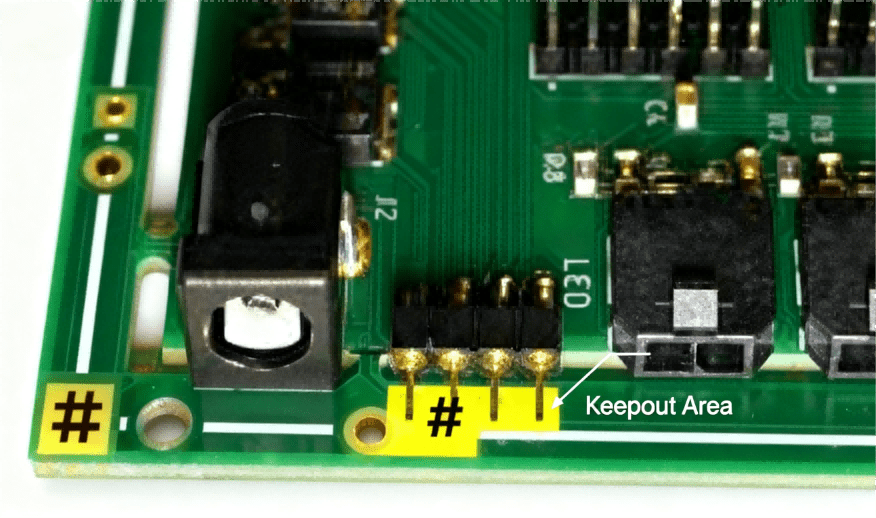What Is PCB Assembly? From Zero to Hero: Master Circuit Diagrams in 5 Simple Steps
This article focuses on "what is pcb assembly", systematically introduces the classification, compon


How to Design Coplanar Waveguide with Ground in Your PCB: Mastering kicad how to draw curved coplanar waveguide
Table of Contents
ToggleWhen designing RF circuits, coplanar waveguide with ground (CPWG) offers enhanced isolation and controlled impedance. This article demonstrates kicad how to draw curved coplanar waveguide on your PCB, ensuring that even flexible routing maintains performance integrity. By combining theoretical principles and practical steps, HCJMPCBA enables OEM engineers and procurement teams to implement high-precision RF paths with confidence.
A coplanar waveguide (CPW) is a planar transmission line consisting of a central signal trace flanked by ground conductors on the same PCB layer. The grounded coplanar waveguide variant—also known as CPWG—adds a full ground plane underneath, further stabilizing impedance and reducing radiation.CPWG supports impedance control, improves signal integrity, and is preferred in high-frequency and microwave applications over standard microstrip traces.
Effective CPWG requires:
A consistent ground pour on both sides of the signal trace on the same layer
A solid ground plane layer underneath for stable reference potential
This arrangement supports impedance control pcb and reduces EMI.
Impedance is governed by:
The width of the signal trace (W)
The gap between the signal trace and ground pour (S)
PCB dielectric thickness (h) and substrate permittivity (ε<sub>r</sub>)
Use a coplanar waveguide calculator—input your parameters to get Zo and effective dielectric constant. Advanced tools account for dispersion, copper roughness, and skin effects.
Define your PCB stack-up to include:
Top signal layer with copper pour
Ground reference plane on the back or inner layer
This establishes the CPWG structure.
Within KiCad, use the layout tools to draw the curved signal trace. Assign a net class with a specific width (W) and clearance (S) to maintain consistent spacing with adjacent ground pours.
Add copper pours to either side of the trace, connected to ground. Ensure kept clearances match the calculator’s gap specifications to preserve impedances.
Enhance shielding with via fences—rows of ground vias flanking the trace. This greatly reduces parasitic coupling.
Use a preferred coplanar waveguide calculator or KiCad-backed plugin to compute final impedance and adjust W/S as needed.
Superior Signal Integrity: Reduced dispersion and cross-talk – ideal for RF or mmWave applications.
Structural Simplicity: Easier routing with curved paths while maintaining impedance control.
Efficient Isolation: Ground pours and via fences minimize electromagnetic interference.
Ground Continuity: Ensure uninterrupted ground pours and stencil connections.
Via Density: Sufficient via fencing increases shielding effectiveness.
Trace Curvature: Gentle curves maintain impedance better than sharp corners.
Mixed-Signal Designs: Keep RF CPWG paths separate from noisy digital circuits.
| Design Aspect | Benefits |
|---|---|
| Grounded CPWG vs Microstrip | Improved isolation, easier routing without vertical vias |
| Via Fence Use | Reduces field interference and enforces signal confinement |
| Supervised Segmentation | Maintains integrity in multipath/high-frequency designs |
| Tools like KiCad + Calculators | Precision control of trace geometry and impedance |
Designing a curved grounded coplanar waveguide in KiCad is straightforward when following these steps:
Define stack-up
Use trace and gap dimensions from impedance calculation
Add ground pours and via fences
Validate impedance with calculators
To learn more about professional PCB and PCBA services, please contact Guangzhou HCJMPCBA.
This article focuses on "what is pcb assembly", systematically introduces the classification, compon
In the field of electronics manufacturing, PCB Layout (Printed Circuit Board Layout) is a core aspec
Guangzhou Huachuang Precision Technology Co., Ltd. (HCJMPCBA) is a leading ISO 13485-certified PCB
